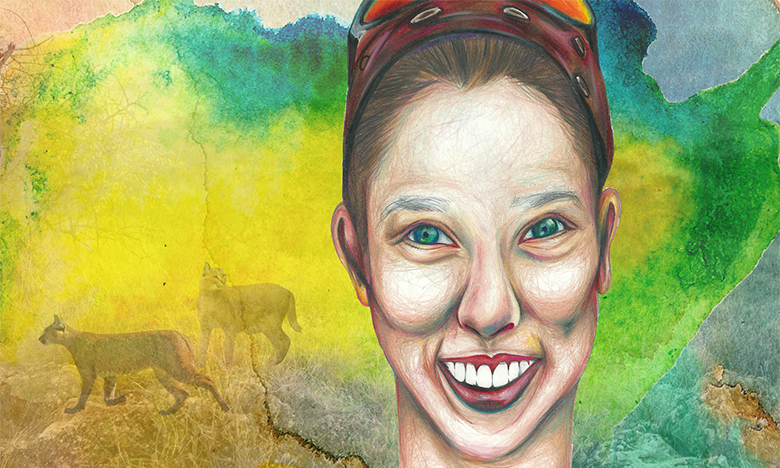Last June and July, more than 30 endangered African penguins from a colony at Cape Town’s Boulders Beach were killed by a caracal, the heaviest of Africa’s small cats. Laurel Serieys, the 37-year-old Texan behind the Urban Caracal Project, was called in to help. Serieys duly caught and collared the offending animal before naming her Disa, after the red flowers adorning Table Mountain, South Africa’s iconic landmark.
Disa was relocated to another part of the city, far from the penguins, and later gave birth to kittens on, of all places, the precipitous cliffs of Karbonkelberg. “Disa was full of surprises,” says Serieys. “When her collar fell off … we had to call in rock climbers to retrieve it.”
Disa was capture No. 27 in a project whose mission is to evaluate the effects of urbanization on the behavior, movement patterns, diet and genetic health of caracals in the Cape Peninsula — a project that should never have gotten off the ground. Serieys, whose first word was “Leo” and says she knew she’d get a Ph.D. from the age of 10, could have called it quits on at least a dozen occasions. After completing her doctorate in ecology and evolutionary biology at UCLA, she was determined to use her skill set overseas (“In the U.S., I’m a dime a dozen”), and there was only one place her surfer husband would agree to move: Cape Town, South Africa. But it was also a city with no existing infrastructure for the study of mesocarnivores, the oft-overlooked medium-size predators that are Serieys’ passion because of how much they tell us about the health of ecosystems. “My Ph.D. supervisor said it was career suicide,” she recalls.
CAPE TOWN … IS AN IDEAL PLACE TO TEST WHETHER CONSERVATION IS EVEN POSSIBLE WHEN THERE ARE IMPOVERISHED COMMUNITIES COMPETING FOR RESOURCES.
And there was more: Soon after arriving in Cape Town in 2015, thieves stole her equipment, her lone staff member quit, and massive fires consumed 29,000 acres in her study area. Then Serieys’ marriage collapsed — her husband announcing he was no longer prepared to join her in Cape Town — and her health was rocked by severe complications from the thyroid cancer she had battled when she was 23.
Professor Justin O’Riain, from the Institute for Communities and Wildlife in Africa, a partner in the Urban Caracal Project, confesses to being dumbstruck by what Serieys has achieved in three years: “To call her driven is an understatement,” he says. He goes on to describe her as the face of new young science. “She’s very principled in terms of scientific rigor, but she has also completely grasped social media and bringing the public on board. We dinosaurs have all learned a huge deal from her.”

